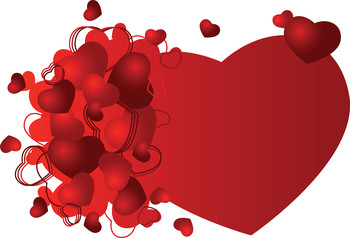Why Valentine’s Day at all and why call it “Valentine’s” day? Why commemorate it on February 14th and why celebrate it with flowers and chocolate? The answers lie in the mists of time with practices that grew into traditions.
At least three Christian martyrs were named “Valentine”. Emperor Claudius II forbade Roman soldiers to marry. His concept was similar to the reasoning of the Catholic Church’s edict, which disallows priests from marrying. As priests are married to the Church, with a wife and family seen as an unwarranted distraction, so were Roman soldiers to be “married” to the Empire rather than to spouses. A Christian Bishop named Valentine ignored this order of the Emperor and married Roman soldiers in secret. Eventually he was found out, tried then convicted and ultimately he was executed on February 14, 270. He sent a letter to his daughter from prison before he was put to death signed, “…from your Valentine.”
The first Valentine’s Day was formally celebrated in 496. Its connection with love is twofold. First, there was the legend from the Greeks. Aphrodite, the goddess of love, supposedly cut her finger on the thorn of a white rose and her blood then colored its petals red, thus were red roses created. When Aphrodite’s lover Adonis died, she cried tears and where they touched the earth, red rose bushes bloomed or so goes the story. That explains the association of red roses with love and soon additionally to Valentine’s Day. The second connection is the Roman holiday Lupercalia, which was a celebration of health and fertility that was also supposed to ward off evil. Since the festival took place in mid February and since “fertility” usually involves a certain amount of “romance”, the connection to love seems obvious. When one adds in the story of Bishop Valentine and the date of his death, a holiday was born.
The very first recorded Valentine’s Day card was from Charles the Duke of Orleans to his wife. He wrote her a love poem as she languished as a prisoner in the Tower of London. The Duke had his ode of affection delivered on February 14, 1415. The Hallmark Corporation now sells 161 million Valentine’s Day cards annually. It is estimated as many as 600 million Valentine’s Day cards are exchanged in the United States every year when one adds in all of the homemade greetings, all of the school kids sharing cards in classrooms and all of the friends’ greetings that are exchanged in a practice that is growing in popularity for Valentine’s Day as well.
The origin of red roses has already been explained. It became common to give roses as a sign of affection in the 1600’s. Approximately 250 million roses are grown every year in the United States alone for lovers and sweethearts to celebrate the holiday. According to lore, if you give one red rose it means the recipient is still the one for you. Two roses is thought to mean “the feeling’s mutual”. If you give your special someone three roses it is meant to signify, “I love you.” A half dozen roses carries the message, “Please be mine.” A dozen red roses is a profession of first love for couples new to a relationship and a proposal of marriage for those couples that have been together for a while. If you give 101 roses it means, “I’m crazy for you and my love knows no bounds.” On average, 220,000 US couples get engaged while another 6 million people worldwide pop the question on February 14th.
The ancient Greeks called chocolate, “the food of the gods” but it wasn’t until nearly the twentieth century that chocolate was specifically marketed for Valentine’s Day. British candy maker Richard Cadbury began selling chocolates in heart shaped boxes with rosebuds and cupids for Valentine’s Day in 1861. Cupid was associated with the holiday because he was the offspring of Venus, the Roman version of the goddess Aphrodite. It wasn’t until 1923 that United States’ marketers got into the Valentine’s Day candy act. That’s when the Russell Stover Corporation began to market heart shaped boxes for sweethearts to celebrate the holiday. While these were first formal marketing attempts long before that European royalty had been giving each other chocolates laced with amber to show their love for centuries previous to any heart shaped boxes. Chocolate has been considered an aphrodisiac since the time of the Aztecs. In the United States an average of 58 million pounds of chocolate are sold annually for Valentine’s Day.
The National Retail Federation of the United States says that Americans spend $5.8 billion on jewelry, $4.3 billion on romantic dinners, $2.3 billion on flowers and $1.8 billion on chocolate and candy for Valentine’s Day. Women were surveyed and their preferred Valentine’s Day gifts were; 25% said a night out, 15% chocolate, 15% flowers, 13% a store bought card, 12% a homemade gift, 10% jewelry, 5% electronics and 5% lingerie.
A trend emerging in the United States is for unattached singles to get together to celebrate friendship. That’s the meaning of Valentine’s Day in Finland where the day is not limited to romantic interests but rather covers everyone significant in your life.
Whatever it means to you and however you celebrate it, Happy Valentine’s Day.


